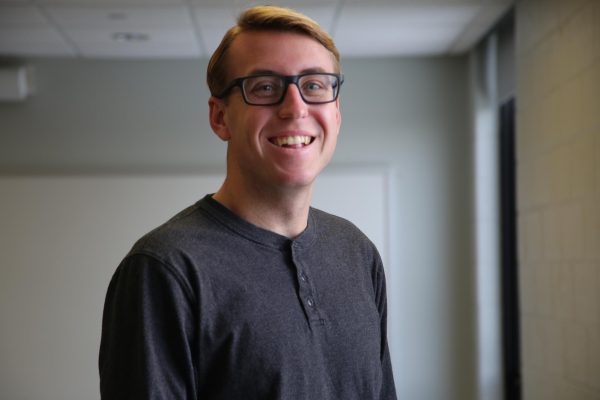Tenured St. Joe’s faculty members were given the opportunity to participate in a tenure buyout program, as first announced in a Feb. 8 email to all tenured faculty from James Carter, Ph.D., interim provost.
Carter cited the recent mergers as one of the motivations behind the program, which is titled the Voluntary Separation and Tenure Buyout Program (VSP).
“In an effort to match resources to today’s curriculum and student body while supporting our faculty’s freedom to make personal career choices, we will offer a tenure buyout this spring,” Carter wrote in the Feb. 8 email.
The program allows tenured faculty members to retire while gaining additional benefits they would not normally receive. These benefits include being paid an amount equal to their 2024-25 salary, continued tuition remission and a payment equal to the amount the university would pay for six months’ worth of healthcare benefits.
Registration for the program ended March 29, but final confirmation does not occur until faculty submit their General Release Statement on or by May 17, so it is currently unknown how many faculty members will accept the offer.
When The Hawk asked about how many tenured faculty are currently employed at St. Joe’s and how that number has changed since the mergers with the Pennsylvania College of Health Sciences and the University of the Sciences, Kevin Gfeller, assistant director of public relations for the office of marketing and communications, said the university has not tracked the total of how many tenured faculty there are.
“Given the complexity of mergers and the ongoing integration processes, we have not compiled or published specific numbers related to tenured faculty and staff pre- and post-mergers,” Gfeller wrote in response to written questions from The Hawk. “This decision is driven by our commitment to ensuring accuracy and preventing any potential misinterpretation of data.”
Julie Wollman Ph.D., professor of practice in policy, organizations, leadership, and systems division at the University of Pennsylvania, said universities generally use these tenure buyout programs as a way to drastically lower costs, since “personnel costs are the highest costs for most universities.” The most efficient way to do this is to remove higher paid senior faculty.
“They’ve been around longer, so they’ve gotten more salary increases,” Wollman said.
Wollman went on to say the universities “have to pay another year’s salary…[but] after that year, they’ve addressed a major part of the structural deficit and so their expenses are lower and they are going to be able to move forward with a budget that is more within their means.”
Wollman said these programs are generally a sign that a university has costs exceeding its current revenue.
“Why would you go through this if you didn’t have to?” Wollman said.
A similar program was offered during the spring 2020 semester, also called the Voluntary Separation Program. However, this program applied to tenured or tenure-track staff who had worked for 10 consecutive years and tenured or tenure-track faculty members who had worked for 15 consecutive years. This year’s program is for all tenured faculty.
Eric Pelletier, doctor of physical therapy (DPT), clinical associate professor and president of the Faculty Senate, said the new VSP provides professors with more flexibility for their future endeavors.
“Because it’s voluntary, I don’t think it’s necessarily harmful because it gives faculty who are on tenure the option to choose it if they wish,” Pelletier said.
Paul Aspan, Ph.D., associate professor and chair of theology and religious studies, said while a buyout program offers faculty freedom of choice, he is fearful about the potential loss of a large number of experienced faculty members.
“It’s a grace, it’s a reward. So that’s wonderful,” Aspan said. “The potential downside could be if there’s a massive exodus. I don’t know how I would predict that. I don’t know if the administration knows how to predict that.”
While Wollman said that, in her experience, these mass exoduses are not something to be worried about, she also said individual professors may have reason to worry about the future of their departments.
“It’s a controversial practice in that anybody saying, ‘We want you to leave early’ when you’re tenured doesn’t feel quite right,” Wollman said. “Because when you have tenure, presumably, you can work until you’re ready to retire. It also doesn’t feel good to faculty, often because they’re very worried, for good reason, that they’re not going to be replaced by another tenure-track faculty member, that this faculty position is going to be lost in their program.”
When asked by The Hawk if the VSP offer would impact the course schedule for the fall 2024 semester since faculty do not have to officialize their acceptance until after fall 2024 registration has taken place, Carter wrote that necessary changes will be made “should the need arise.”
“Course schedules are fluid,” Carter wrote in response to written questions from The Hawk. “They can and do change due to a variety of different reasons. We will use a similar process should the need arise to make scheduling changes.”
St. Joe’s is not the only Jesuit university to offer a tenure buyout in recent years. Marquette University offered a tenure buyout for faculty who want to retire either at the end of the 2023-24 or 2025-26 academic years, and Georgetown University offered a buyout for faculty who wanted to retire following the 2023-24 academic year.
In Philadelphia, Drexel University also offered a tenure buyout program for faculty who would retire by the end of summer 2023.
Wollman said these buyouts will become more and more common as university enrollments across the country continue to decline.
“People forget that universities are businesses,” Wollman said. “They are responding to demand, and the demand has declined because there are fewer potential students. There’s also other options for people, and because [college is] so expensive, they’re not sure about the return on investment. So they’re just reacting to the way that enrollment has [been] constricted, and you’ll see more and more of that.”
















































